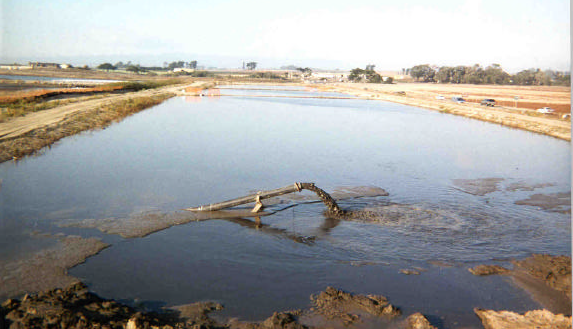Global S&T Development Trend Analysis Platform of Resources and Environment
| Barriers and Opportunities for Beneficial Reuse of Sediment to Support Coastal Resilience | |
| admin | |
| 2020-10-21 | |
| 发布年 | 2020 |
| 语种 | 英语 |
| 国家 | 美国 |
| 领域 | 资源环境 |
| 正文(英文) | A new NOAA-funded study outlines systemic changes that would make beneficial reuse of sediment to support coastal resilience a more widespread approach in Southern California. The study, published in Ocean and Coastal Management, identifies the barriers faced by natural resource managers in Southern California in their pursuit towards reusing sediment from areas where it is a problem to areas where it can benefit the ecosystem and community. Sediment can benefit natural habitats, for example by raising the elevation of marshes to help them keep up with sea level rise or increasing the height of beaches and dunes to ensure their survival despite future storm surges, providing both an ecosystem and community benefit. Sediment can also be a benefit to development activities if the development needs to increase the grade elevation.  The Moss Landing Harbor (CA) project is an example of a small to medium sized beneficial sediment reuse project . The Moss Landing Harbor District (MLHD) was unable to dredge their commercial and recreational harbor as a result of elevated pesticides and a lack of a suitable upland disposal site. The MLHD, working closely with Federal and State agencies, obtained permits to develop an upland drying and processing site. In conjunction with this site, the MLHD used cement additives to provide base material for fill in road construction, parking lots, and the development of a new recreational use facility. Credit Port of Long Beach, CA. 2000. The team of scientists at University of California Irvine, Southern California Coastal Waters Research Project and the Tijuana River National Estuarine Research Reserve, the investigators identified regulatory, technical, psychological, financial, and interorganizational barriers to beneficial reuse of sediment to support coastal resilience. The project scientists interviewed sediment managers and regulators in two watersheds of Southern California to identify key barriers to beneficial reuse of sediment for coastal resilience. Beneficial reuse of sediment refers to the repurposing of local sources of sediment, usually from dredging activities, to benefit ecosystem and community resilience rather than maintaining the status-quo that has primarily involved transport to and from distant locations. The project focuses on the Newport Bay Estuary and the Tijuana River Valley. The study outlines those barriers and provides recommendations to make beneficial reuse a more feasible management approach. Sediment erodes from upstream urban and rural landscapes and builds up, causing issues to navigation and increases the risk of flooding. The sediment must then be dredged and transported to other locations. In many cases, the removed sediment is treated as a waste product and disposed of at distant locations. Regulatory inflexibility was a major issue identified, as often multiple, federal, state, and local agencies have different permitting requirements and processes that are not compatible. Additionally, a lack of expertise in natural habitats by permitting individuals and a lack of matching funds, prevent successful beneficial reuse projects from moving forward through the permitting and approval processes. Similarly, sediment reuse projects require multiple agencies working collaboratively, making them more difficult to execute than just disposing of the material. Technical barriers associated with matching sediment types between dredging sides and final locations can also limit options for placement sites. Even psychological aspects come into play, such as the public perception that initial placement of sediment damages the attraction or health of the sediment placement site, leading to dissatisfaction from the public. Despite the barriers to beneficial reuse of sediment, a streamlined permitting process, case studies with strong outreach, and inclusion of the benefits sediment provides to placement sites within cost benefit analyses used to make project decisions, are all solutions that are being pursued that will continue to break down the barriers that prevent sediment reuse in Southern California. Please see the article for a detailed list of recommendations broken down by barrier type. The research described in the paper is from a project supported by the NCCOS Effects of Sea Level Rise Program. Citation: Ulibarri, Nicola, Kristen A. Goodrich, Paroma Wagle, Matthew Brand, Richard Matthew, Eric D. Stein and Brett F. Sanders. 2020. Barriers and opportunities for beneficial reuse of sediment to support coastal resilience. Ocean & Coastal Management 195. 105287. https://doi.org/10.1016/j.ocecoaman.2020.105287  Barriers and Opportunities for Beneficial Reuse of Sediment to Support Coastal Resilience. Credit. Ulibarri, et al., 2020 |
| URL | 查看原文 |
| 来源平台 | National Centers for Coastal Ocean Science |
| 文献类型 | 新闻 |
| 条目标识符 | http://119.78.100.173/C666/handle/2XK7JSWQ/299986 |
| 专题 | 资源环境科学 |
| 推荐引用方式 GB/T 7714 | admin. Barriers and Opportunities for Beneficial Reuse of Sediment to Support Coastal Resilience. 2020. |
| 条目包含的文件 | 条目无相关文件。 | |||||
| 个性服务 |
| 推荐该条目 |
| 保存到收藏夹 |
| 查看访问统计 |
| 导出为Endnote文件 |
| 谷歌学术 |
| 谷歌学术中相似的文章 |
| [admin]的文章 |
| 百度学术 |
| 百度学术中相似的文章 |
| [admin]的文章 |
| 必应学术 |
| 必应学术中相似的文章 |
| [admin]的文章 |
| 相关权益政策 |
| 暂无数据 |
| 收藏/分享 |
除非特别说明,本系统中所有内容都受版权保护,并保留所有权利。
修改评论